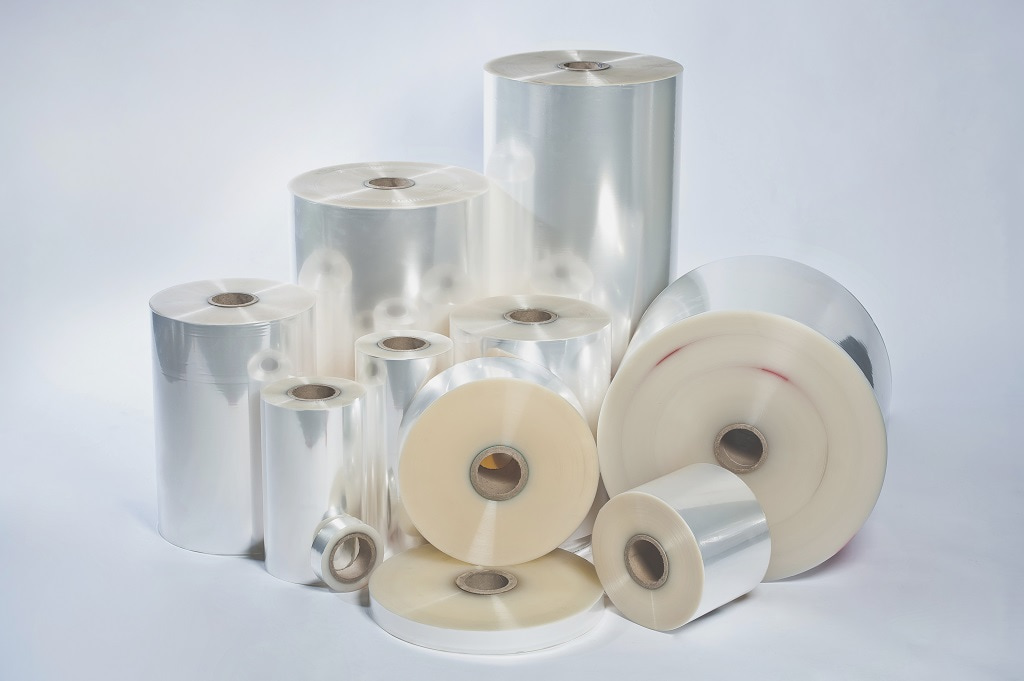In the world of flexible packaging, Biaxially Oriented Polypropylene (BOPP) films stand out for their versatility, durability, and widespread use across industries. As global demand for sustainable practices intensifies, understanding which BOPP films are most suitable for recycling processes becomes crucial. This not only helps reduce plastic waste but also aligns with circular economy principles, allowing materials to be reused without significant loss in value. With increasing regulatory pressures and consumer preferences shifting toward eco-friendly options, industry professionals and buyers must prioritize recyclable BOPP variants to stay competitive.
Understanding BOPP Films
BOPP films are produced by stretching polypropylene resin in two directions—machine and transverse—resulting in enhanced mechanical properties such as high tensile strength, clarity, and barrier performance against moisture and oxygen. These films are lightweight, cost-effective, and adaptable, making them a staple in packaging for food, pharmaceuticals, textiles, and more.
Technically, BOPP films have a density of about 0.90-0.91 g/cm³ and a melting point around 160-170°C, which facilitates processing in recycling systems. Their chemical resistance and low electrostatic charge further contribute to their appeal in high-speed manufacturing lines. However, not all BOPP films are created equal when it comes to recyclability. Factors like composition, additives, and layering determine how easily they can be reprocessed into new products.

Common Types of BOPP Films
BOPP films come in various forms, each tailored to specific applications. Here’s a breakdown of the primary types:
- Glossy or Plain BOPP Film: This is the standard, transparent variant known for its high gloss and clarity. It’s often used in food packaging, labels, and overwraps due to its excellent printability and moisture resistance.
- Metalized BOPP Film: Featuring a thin aluminum layer (typically 30-100 nm thick) applied via vacuum metallization, this type offers superior barrier properties against light, oxygen, and aromas. It’s common in snack packaging and pharmaceutical wraps.
- Matte BOPP Film: With a non-reflective surface that absorbs light, matte films provide a premium, tactile feel. They’re popular in luxury packaging and often laminated with other materials for added functionality.
- Holographic BOPP Film: Incorporating laser-etched patterns for visual effects, these films enhance brand appeal in cosmetics, tobacco, and gift wrapping. They can be transparent or opaque.
- Pearlescent BOPP Film: This opaque, white film with a pearl-like sheen blocks light and is ideal for ice cream wrappers, chocolate packaging, and beverage labels. It includes a heat-sealable layer.
- Printable BOPP Film: Optimized for ink adhesion on one or both sides, these films are used in advertising and decorative applications, ensuring vibrant prints without smudging.
Each type serves distinct purposes, but their recyclability varies based on structural complexity and additives.
Factors Influencing BOPP Film Recyclability
Several key factors determine how well a BOPP film performs in recycling processes:
- Material Composition: Mono-material films made purely from polypropylene are the easiest to recycle, as they avoid contamination from other plastics or metals. Multi-layer structures, such as those laminated with PET or aluminum foil, complicate sorting and processing.
- Additives and Coatings: Inks, adhesives, and coatings can introduce contaminants. Water-based inks are preferable over solvent-based ones, as they degrade less during recycling. Metalized layers add challenges due to the need for separation.
- Contamination Levels: Clean, dry films free from food residues or labels recycle more efficiently. The thinness (typically 15-50 microns) of BOPP can make handling tricky in standard equipment, leading to potential losses during shredding.
- Color and Transparency: Clear or transparent films are simpler to sort and reprocess than colored or printed ones, which may require additional steps to remove pigments.
- Local Infrastructure: Recyclability depends on available facilities. In regions with advanced sorting technologies, even complex BOPP films can be handled, but global inconsistencies pose barriers.
Industry data shows that polypropylene, including BOPP, accounts for a significant portion of plastic waste, with recycling rates varying from 20-50% depending on the region. Addressing these factors through design-for-recycling principles can boost these figures substantially.
Most Suitable Types for Recycling Processes
When focusing on recycling efficiency, certain BOPP film types excel due to their simplicity and compatibility with standard polypropylene streams (resin code #5).
- Plain or Glossy BOPP Films: These are the top choice for recycling. As mono-material options without metalization or heavy coatings, they can be shredded, washed, and extruded into pellets with minimal degradation. Their transparency aids in sorting, and they retain high value for reuse in non-food applications like automotive parts or construction materials.
- Printable BOPP Films (Non-Metalized): If treated with recyclable inks, these films recycle well. Their single-layer structure allows seamless integration into PP recycling chains, making them suitable for buyers prioritizing sustainability.
- Matte BOPP Films (Mono-Material): Unlaminated matte variants are recyclable, though their light-absorbing properties may require careful processing to avoid quality loss. They’re increasingly favored in eco-conscious packaging designs.
In contrast, metalized BOPP films are less ideal due to the aluminum layer, which requires specialized degassing and filtration to remove impurities. While recyclable, they demand advanced machinery, resulting in higher costs and lower yields. Holographic and pearlescent films face similar issues if they include non-PP elements, often necessitating chemical recycling methods to break down polymers into monomers.
Studies indicate that mono-material BOPP films can be recycled up to 10 times without significant property loss, supporting closed-loop systems in packaging.
Recycling Processes for BOPP Films
Recycling BOPP involves mechanical or chemical methods, tailored to the film type.
Mechanical recycling starts with collection and sorting, followed by shredding into flakes. Washing removes contaminants, and extrusion melts the flakes into pellets. For plain BOPP, a single-stage extruder suffices, but metalized types benefit from multi-stage systems with degassing zones to eliminate inks and moisture.
Chemical recycling, an emerging technique, depolymerizes PP into raw monomers, ideal for contaminated or complex films. This method yields virgin-like material but is energy-intensive.
Challenges include energy consumption (around 1-2 kWh per kg processed) and the need for high-purity inputs. Best practices involve using cutter-compactor systems for direct feeding without pre-crushing, enhancing efficiency by 20% in output.
Buyer’s Guide: Selecting Recyclable BOPP Films
For industry professionals and international buyers, choosing the right BOPP films requires a strategic approach:
- Assess Composition: Prioritize mono-material films certified under standards like ISCC PLUS for recycled content. Avoid multi-layers unless essential for barrier needs.
- Evaluate Suppliers: Look for manufacturers offering transparency in material sourcing and recyclability claims. Request data on post-consumer recycled (PCR) content.
- Consider Applications: For food packaging, opt for plain BOPP to ensure easy end-of-life processing. In non-food sectors, recycled-content films can reduce costs by 10-15%.
- Test Compatibility: Verify films with your recycling equipment. Factors like film thickness (opt for 20-40 microns for better handling) and melting index (around 2-4 g/10 min) influence processability.
- Cost-Benefit Analysis: While premium recyclable films may cost 5-10% more upfront, they offer long-term savings through waste reduction and compliance with EPR regulations.
International trade audiences should note varying standards—the EU’s PPWR emphasizes recyclability by 2030, while Asia focuses on volume recovery. Partnering with reliable suppliers ensures global compliance.
Industry Trends in BOPP Recycling
The BOPP sector is evolving rapidly toward sustainability. Key trends include:
- Mono-Material Shift: Brands are redesigning packaging to use single-polymer structures, improving recycling rates by up to 30%.
- Advanced Technologies: Innovations in sorting (AI-driven NIR systems) and processing (enhanced extrusion with lower energy use) are making complex BOPP recyclable. Chemical recycling is projected to grow at a 15% CAGR through 2030.
- Circular Economy Initiatives: Collaborations between manufacturers, recyclers, and governments are boosting infrastructure. For instance, programs in Europe recover over 40% of PP films, setting benchmarks for global adoption.
- Biodegradable Alternatives: While not fully replacing traditional BOPP, bio-based variants are emerging for niche applications, reducing reliance on fossil fuels.
These trends underscore the importance of investing in recyclable BOPP to future-proof operations amid rising environmental scrutiny.
In summary, plain and mono-material BOPP films emerge as the most suitable for recycling processes, offering ease of processing, high value retention, and alignment with sustainability goals. By selecting these variants, businesses can minimize waste, comply with regulations, and contribute to a greener supply chain. Rumtoo, as a leader in plastic recycling machinery, provides state-of-the-art solutions like shredders and extruders optimized for BOPP films, ensuring efficient, high-quality reprocessing. Contact us today to request a quote or discuss how our equipment can enhance your recycling operations.

